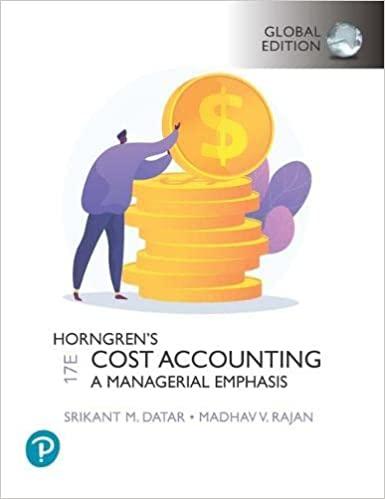Answered step by step
Verified Expert Solution
Question
1 Approved Answer
profit. Capital profits should not be transferred to the profit and loss account but should be transferred to capital reserve which would appear as a

profit. Capital profits should not be transferred to the profit and loss account but should be transferred to capital reserve which would appear as a liability in the balance sheet. Revenue profit, on the other hand, is a profit by trading, e.g. Profit on sale of goods, income from investments, discount received, commission earned, rent received, interest earned etc. Such profits are taken to profit and loss account. Capital And Revenue Receipts: The distinction between capital receipts and revenue receipts is also important. Money obtained from the sale of fixed assets of investments, issue of shares, debentures, money obtained by way of loans are examples of capital receipts. On the other hand, revenue receipts are cash from sales, commission received, interest on investments, transfer fees, etc. Capital receipts are shown in the balance sheet and revenue receipts in the profit and loss account. Capital And Revenue Losses: 1 Capital losses are those losses which occur at selling fixed assets or raising share capital. For e.g., if investments having an original cost of rs.20,000 are sold for rs.16,000, there will be a capital loss of rs.4,000. Similarly when the shares of the face value of rs.100 are issued for rs.90, the amount of discount i.e. Rs.10 per share will be a capital loss. Capital losses should not be debited to profit and loss account but may be shown on the asset side of balance sheet. As and when capital profits arise, losses are met against them. Revenue losses are those losses which arise during the normal course of business i.e. In trading operations such as losses on the sale of goods. Such losses are debited to profit and loss account. Illustration 1: State which of the following expenditures are capital in nature and which are revenue in nature: Freight and cartage on the new machine rs. 150; erection charges Rs.200. A sum of rs 10,000 on painting the new factory, Fixtures of the book value of rs.1,500 was sold off at rs.600 and new fixtures of the value of rs.1,000 were acquired, cartage on purchase rs.50. Rs.1,000 spent on repairs before using a second hand car purchased recently
Step by Step Solution
There are 3 Steps involved in it
Step: 1

Get Instant Access to Expert-Tailored Solutions
See step-by-step solutions with expert insights and AI powered tools for academic success
Step: 2

Step: 3

Ace Your Homework with AI
Get the answers you need in no time with our AI-driven, step-by-step assistance
Get Started


